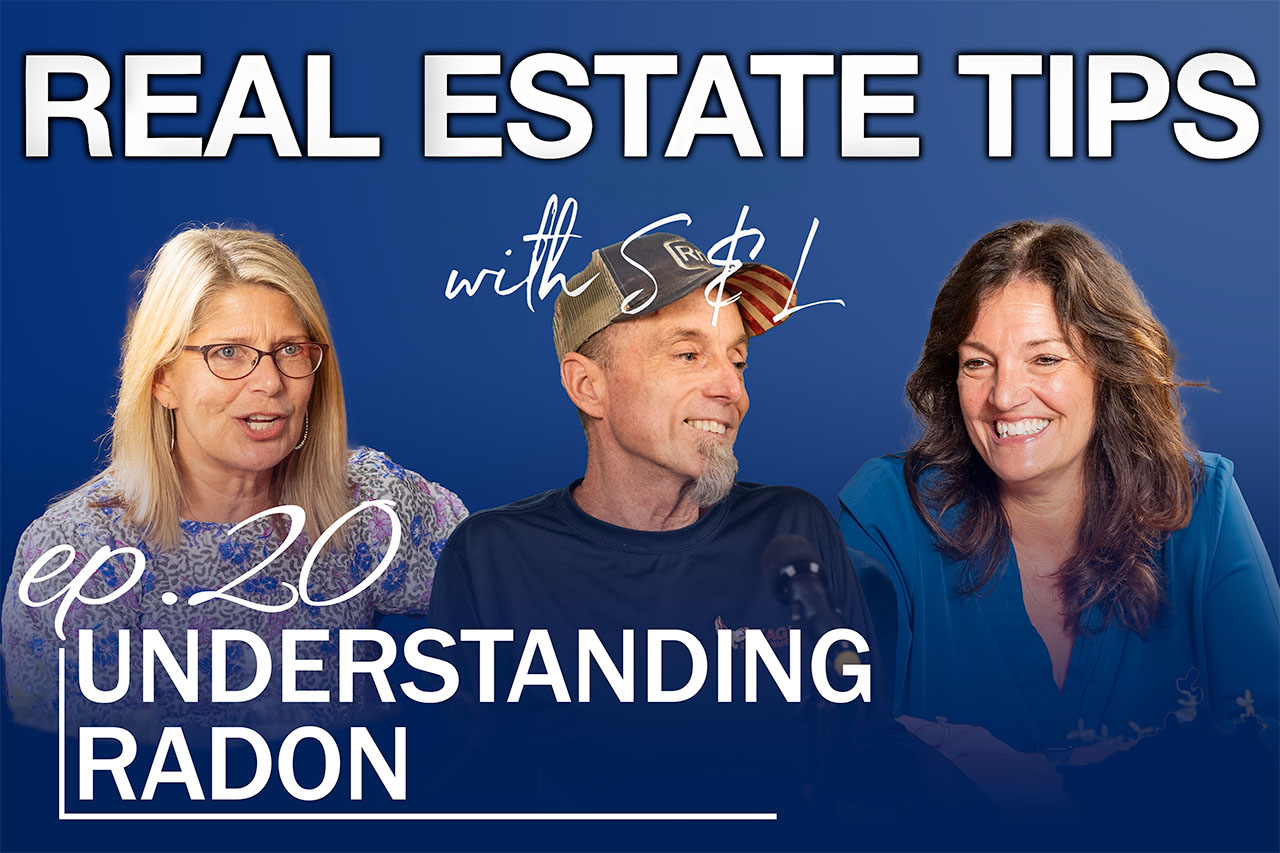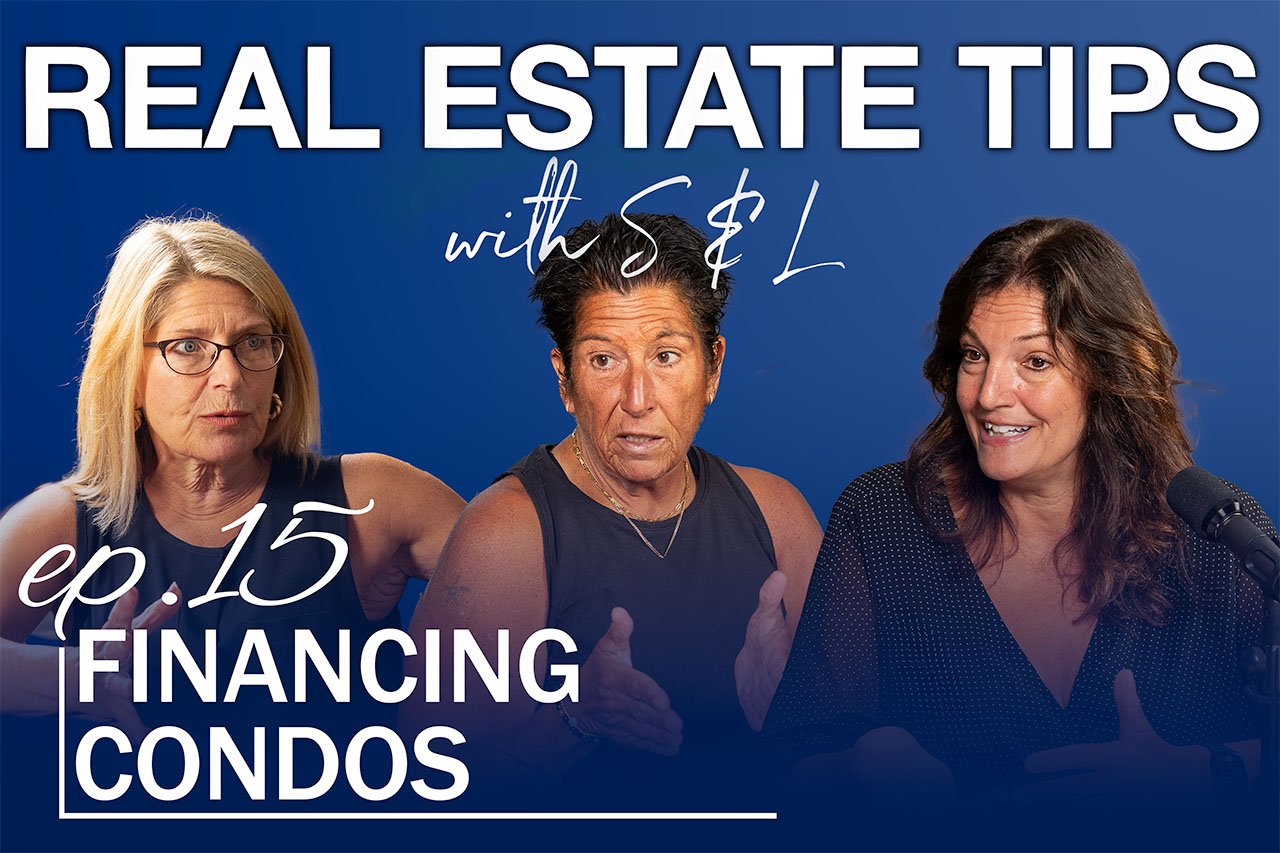
Episode 24: 12 Days of Real Estate – Holiday Edition
Wrapping Up the Year with Real Estate Cheer
In Episode 24 of Real Estate Tips with S&L, we had a little fun with the holiday season by putting a real estate twist on the classic "12 Days of Christmas." From gift-worthy tips to year-end advice for buyers, sellers, and homeowners, this festive episode was all about celebrating the wins — and setting up for success in the new year.
Whether you're planning a move, looking to invest, or just want to stay informed, there's something in this episode for everyone.
The Bottom Line:
Real estate doesn’t stop for the holidays — and neither do we! Tune in for some seasonal laughs, smart takeaways, and a dose of motivation to carry you into the new year.
Let’s sleigh your 2025 real estate goals — I’m just a message away.
🔗 Tune in: Listen to the full episode below, watch on YouTube or listen wherever you get your podcasts!
Be sure to check out My Little Black Book for a list of my trusted service professionals.
I am your local real estate expert Making Realty Dreams Reality. Give me a call at 978-855-9112 or fill out this contact me form to get started on your homeownership journey.

Episode 23: Real Estate Wisdom with Laura Baliestiero
Lessons from a Legend: Real Estate Advice You Can Bank On
Experience matters — and when it comes to real estate, few have more of it than Laura Baliestiero. A consistent top producer with decades of success under her belt, Laura joined us for Episode 23 of Real Estate Tips with S&L to share her incredible insights on what it takes to build a lasting, impactful career in real estate.
Here are the key takeaways from our conversation:
1. Success is Built on Relationships, Not Transactions
Laura emphasized that real estate isn’t just about selling homes — it’s about building trust. Long-term success comes from truly caring about your clients, showing up consistently, and putting their needs first. People remember how you made them feel.
2. The Market Changes — But Principles Don’t
Markets rise and fall, interest rates fluctuate, and trends come and go. But professionalism, preparation, and integrity never go out of style. Laura’s advice? Stay steady, stay sharp, and stay client-focused, no matter what the market is doing.
3. Consistency Beats Intensity
While it’s tempting to go all-in during busy seasons, the agents who succeed year after year are the ones who show up every day. From client follow-ups to learning opportunities, small daily actions add up to big long-term wins.
4. Know Your Stuff — and Your Neighborhood
Being a local expert matters. Laura shared how in-depth market knowledge, community insight, and understanding neighborhood nuances give agents a competitive edge — and give clients real confidence in your guidance.
5. Don’t Be Afraid to Evolve
Even after decades in the industry, Laura continues to adapt and grow. From new technologies to marketing trends, staying open to change is key to staying relevant. The best agents are always learning.
The Bottom Line:
There’s no shortcut to excellence — but there is a roadmap. Lead with integrity, commit to relationships, and never stop learning. Whether you're a new agent or a seasoned pro, Laura’s wisdom is a powerful reminder that real estate is a people-first business.
Want to work with someone who follows the same principles Laura lives by? Let’s connect — I bring experience, passion, and care to every client relationship.
🔗 Tune in: Listen to the full episode below, watch on YouTube or listen wherever you get your podcasts!
Check out My Little Black Book for a list of my trusted service professionals.
I am your local real estate expert Making Realty Dreams Reality. Give me a call at 978-855-9112 or fill out this contact me form to get started on your homeownership journey.

Episode 22: Real Estate Revealed with FAQs
Your Real Estate Questions — Answered!
Buying or selling a home can be full of questions — and in Episode 22 of Real Estate Tips with S&L, we decided to tackle some of the most frequently asked questions we get from clients. From pricing and negotiations to what to look for during inspections, we covered it all in this jam-packed FAQ session.
Here are the key takeaways:
1. How Do I Price My Home Right?
The biggest question for sellers is often about pricing. We discussed how market trends, property condition, and comparable sales all play a role in determining the best listing price. It’s a balance of being competitive but also realistic to attract the right buyers.
2. What Should I Look for During an Inspection?
Home inspections are key to the buying process. We broke down some of the major red flags to look out for, like structural issues, water damage, or outdated systems. Knowing what’s important can save you time, money, and a lot of stress.
3. How Much Should I Offer?
Whether you’re buying or selling, pricing strategy is essential. We explained how offering below or above the asking price should depend on your market conditions and the property’s value. We also highlighted the importance of understanding your budget and long-term goals.
4. How Do I Prepare My Home for Showings?
First impressions matter! We shared some tips for sellers on how to declutter, stage, and even spruce up curb appeal to make the property shine when it’s time for showings. Little changes can make a big difference in attracting buyers.
5. What Can I Do if My Offer is Rejected?
Rejection can be tough, but it doesn’t mean the deal is over. We went over strategies for staying patient, making counteroffers, and staying flexible to ultimately land the right deal for you.
The Bottom Line:
There’s no such thing as a silly question when it comes to real estate! By staying informed and asking the right questions, you can make smarter decisions that lead to smoother transactions. Whether you're buying, selling, or investing, knowing the answers can save you time, money, and a lot of stress.
Have more questions? Let’s connect — I’m here to help guide you every step of the way.
🔗 Tune in: Listen to the full episode below, watch on YouTube or listen wherever you get your podcasts!
Be sure to check out My Little Black Book for a list of my trusted service professionals.
I am your local real estate expert Making Realty Dreams Reality. Give me a call at 978-855-9112 or fill out this contact me form to get started on your homeownership journey.

Episode 21: Behind the Appraised Value with Randy Lewis
Understanding Appraisals: What Really Determines Your Home's Worth?
Appraisals play a crucial role in real estate transactions, but many people don’t fully understand how appraisers determine a home’s value. In Episode 21 of Real Estate Tips with S&L, we brought in Randy Lewis, a seasoned appraiser, to break down the appraisal process and give us the inside scoop on what factors truly influence a property’s value.
Here are the key takeaways from our conversation:
1. It’s About More Than Just Square Footage
While square footage is an important factor, it’s not the only thing that appraisers consider. Randy explained that appraisers also evaluate location, condition, upgrades, and the overall market to determine a property’s worth. It’s about looking at the bigger picture.
2. The Role of Comparables (Comps)
Comps, or comparable sales, are one of the most significant factors in appraisals. Appraisers look at recently sold homes in the same area with similar features to gauge the fair market value of the property. Understanding how comps work can help sellers and buyers set realistic expectations.
3. Condition and Curb Appeal Matter More Than You Think
Randy emphasized how the condition of a home — from its foundation to the roof — can significantly affect its appraised value. Simple improvements like fresh paint or updated fixtures can add value, while deferred maintenance can cause a property to be appraised lower than expected. Curb appeal also plays a part in creating a good first impression.
4. The Market’s Impact on Appraisals
Appraisals aren’t immune to the ups and downs of the real estate market. In a hot market, appraisers may be more willing to value homes higher, while in a cooling market, they may adjust values accordingly. It’s crucial to have realistic expectations based on current market conditions.
5. Appraisals vs. Inspections: They Serve Different Purposes
While appraisals focus on determining a property’s market value, home inspections are about the condition of the home itself. Randy clarified that appraisers are not inspecting every detail of the property — they’re evaluating its overall value. Buyers should always conduct an independent inspection in addition to the appraisal.
The Bottom Line:
Understanding the appraisal process is key to navigating real estate transactions smoothly. Whether you’re buying or selling, knowing how appraisers assess value can help you make more informed decisions and avoid surprises.
Thinking about buying or selling? Let’s talk — I can help guide you through the appraisal process and ensure everything goes as smoothly as possible.
🔗 Tune in: Listen to the full episode below, watch on YouTube or listen wherever you get your podcasts!
Be sure to check out My Little Black Book for a list of my trusted service professionals.
I am your local real estate expert Making Realty Dreams Reality. Give me a call at 978-855-9112 or fill out this contact me form to get started on your homeownership journey.

Episode 20: Understanding Radon with Kevin Murphy
Breathe Easy: What Every Homeowner Should Know About Radon
When it comes to your home’s health and safety, radon is a silent threat that often goes unnoticed — but it doesn’t have to. In Episode 20 of Real Estate Tips with S&L, we sat down with Kevin Murphy, a radon expert, to dive deep into the importance of understanding and testing for radon in your home.
Here are the key takeaways:
1. What Is Radon?
Radon is a naturally occurring, odorless, and colorless gas that comes from the breakdown of uranium in the ground. While it’s found all over, in some areas, radon levels can be higher, which increases the risk of exposure.
2. Why Should You Care?
Long-term exposure to high radon levels can lead to serious health risks, including lung cancer. Kevin emphasized that radon is the second leading cause of lung cancer after smoking, making it a vital consideration for homeowners and buyers alike.
3. How Do You Test for Radon?
Testing is simple and affordable. Kevin explained that there are easy-to-use radon test kits that can help you determine if your home has elevated radon levels. If you’re buying or selling, it’s important to do this test upfront as part of your home inspection process.
4. What Do You Do If Radon Levels Are High?
The good news is that radon is fixable! Kevin shared that installing a radon mitigation system is an effective way to lower radon levels in your home. These systems are fairly common and can provide peace of mind for homeowners.
5. Protect Your Family’s Health
For those in radon-prone areas, testing regularly is crucial, especially in basements or lower levels where radon accumulates most. Kevin highlighted how proactive testing and mitigation can create a safer living environment for you and your family.
The Bottom Line:
Radon isn’t something most people think about every day, but it’s something you should absolutely pay attention to. Testing for radon is a simple step that can make a big difference in your home’s safety. Whether you’re buying, selling, or just protecting your family, taking action now can help ensure peace of mind.
Want more information on radon testing or mitigation? Let’s talk — I can connect you with radon experts who can make sure your home is safe and sound.
🔗 Tune in: Listen to the full episode below, watch on YouTube or listen wherever you get your podcasts!
Be sure to check out My Little Black Book for a list of my trusted service professionals, including Radon!
I am your local real estate expert Making Realty Dreams Reality. Give me a call at 978-855-9112 or fill out this contact me form to get started on your homeownership journey.

Episode 19: Investor Experience with Eric Fowler
Mastering Real Estate Investment: Expert Tips from Eric Fowler
Real estate investment can be incredibly lucrative — but it’s not without its challenges. In Episode 19 of Real Estate Tips with S&L, we sat down with real estate investor Eric Fowler to discuss his journey, insights, and tips for those looking to build wealth through property.
Here are the key takeaways from our conversation:
1. Start Where You Are — No Need for Perfection
Eric shared how he began his investment journey with modest properties, emphasizing that you don’t need to start with multi-million-dollar deals. Begin with what’s accessible, learn as you go, and scale up from there. The key is to take that first step.
2. Find the Right Market — Location is Everything
When it comes to investment properties, location is critical. Eric stressed the importance of doing market research to find areas with growth potential. Look for regions with rising property values, strong rental demand, and future development plans.
3. Leverage Your Network — Collaborate with Experts
Real estate investing isn’t something you should do alone. Eric highlighted how partnering with other investors, working with experienced agents, and seeking advice from mentors can fast-track your success. Building a strong network is just as important as finding the right property.
4. Don’t Overlook Property Management
One of the biggest lessons Eric learned was the importance of property management. Whether you’re flipping or renting, having a reliable property manager to handle day-to-day operations can save you time, money, and frustration. It allows you to focus on growing your portfolio.
5. Have a Long-Term Vision
Real estate investment is a marathon, not a sprint. Eric emphasized that to truly succeed, you need to think long-term. Whether you’re flipping houses or building rental income, patience and strategic planning will pay off over time.
The Bottom Line:
Real estate investing can be a powerful wealth-building tool, but it’s not without its learning curve. With the right mindset, research, and network, anyone can break into the world of real estate investing. Eric’s experience shows that with dedication and the right support, real estate investment can lead to lasting financial success.
Ready to dive into investing or expand your portfolio? Let’s chat — I’m here to guide you every step of the way.
🔗 Tune in: Listen to the full episode below, watch on YouTube or listen wherever you get your podcasts!
Be sure to check out My Little Black Book for a list of my trusted service professionals.
I am your local real estate expert Making Realty Dreams Reality. Give me a call at 978-855-9112 or fill out this contact me form to get started on your homeownership journey.

Episode 18: Longevity in Real Estate with Sara Lyman
How to Build a Long-Lasting Career in Real Estate
In real estate, lasting success isn’t about quick wins — it’s about building a sustainable career that stands the test of time. In Episode 18 of Real Estate Tips with S&L, we were joined by Sara Lyman, a seasoned real estate professional, who shared her insights on how to stay successful and relevant in the industry year after year.
Here are the key takeaways from our conversation:
1. Build Trust, Not Just Transactions
Sara emphasized that long-term success in real estate comes from developing deep, trusting relationships with clients. The foundation of her career has been built on repeat clients and referrals, which come when you put people first and truly listen to their needs.
2. Adaptability is Key to Longevity
The real estate market is constantly evolving, and to remain successful, you need to adapt to new trends, technologies, and shifts in the market. Whether it’s embracing new marketing tools or understanding how buyer preferences change, Sara believes that staying flexible and open to change is essential for staying relevant.
3. Consistency Over Perfection
Success isn’t about being perfect — it’s about showing up consistently. Sara shared how sticking to a routine, setting clear goals, and staying disciplined in your efforts can lead to long-term results. Building a brand and reputation takes time and perseverance, but the rewards are worth it.
4. Keep Learning and Growing
In an industry that’s always changing, continuous learning is essential. Sara discussed how she invests in professional development, whether it’s through networking, courses, or reading up on industry trends. Knowledge is power, and staying sharp keeps you ahead of the competition.
5. Focus on Your Why
Staying grounded in your "why" is a powerful motivator. Sara explained that understanding your purpose — whether it’s helping people achieve their homeownership dreams or building a legacy — keeps you inspired even when times get tough. That passion drives her every day and keeps her engaged in her work for the long haul.
The Bottom Line:
Real estate is a marathon, not a sprint. If you want to build a long-lasting career, focus on relationships, adaptability, and continuous growth. Consistency, learning, and staying true to your purpose will set you up for success in the ever-changing real estate world.
Ready to make your mark in real estate? Let’s connect — I’m here to help you grow and thrive in this exciting industry!
🔗 Tune in: Listen to the full episode below, watch on YouTube or listen wherever you get your podcasts!
Be sure to check out My Little Black Book for a list of my trusted service professionals.
I am your local real estate expert Making Realty Dreams Reality. Give me a call at 978-855-9112 or fill out this contact me form to get started on your homeownership journey.

Episode 17: What's Happening in Leominster with Mayor Mazzarella
Leominster’s Bright Future: Insights from Mayor Mazzarella
In Episode 17 of Real Estate Tips with S&L, we sat down with Leominster’s Mayor Dean Mazzarella to discuss the exciting developments happening in the city. From new infrastructure projects to growing businesses, there’s a lot to be excited about for residents and potential homebuyers.
Key Takeaways:
-
Growing Economy: Leominster is seeing a boost in economic development, with new businesses opening and infrastructure improvements making it an even more attractive place to live.
-
Community Focus: Mayor Mazzarella highlighted the city’s commitment to community building, focusing on enhancing parks, schools, and public spaces for all residents.
-
Real Estate Potential: With all the positive changes, Leominster is becoming a hot spot for real estate investment, offering opportunities for both buyers and sellers.
Leominster is on the rise, and now’s a great time to take a closer look at this thriving community.
Interested in learning more? Let’s connect — I’d love to help you explore the opportunities in Leominster!
🔗 Tune in: Listen to the full episode below, watch on YouTube or listen wherever you get your podcasts!
Be sure to check out My Little Black Book for a list of my trusted service professionals in Leominster & beyond!
I am your local real estate expert Making Realty Dreams Reality. Give me a call at 978-855-9112 or fill out this contact me form to get started on your homeownership journey.

Episode 16: Commercial Real Estate with Doug Tammelin
The Essentials of Commercial Real Estate: Insights from Doug Tammelin
Commercial real estate (CRE) is a whole different world compared to residential real estate, and in Episode 16 of Real Estate Tips with S&L, we had the privilege of speaking with Doug Tammelin, an expert in the field, who shared his wealth of knowledge on the ins and outs of commercial properties. Whether you’re considering expanding into CRE or simply curious about the industry, Doug’s insights offer valuable lessons for both new and seasoned investors.
Here are the key takeaways from our discussion:
1. Understanding Commercial Real Estate Categories
Doug broke down the different categories within commercial real estate, which can be divided into five main types:
-
Office Space: This includes everything from small local offices to large corporate buildings.
-
Retail Properties: These are spaces leased to businesses like stores, restaurants, or shopping malls.
-
Industrial Properties: Warehouses, factories, and distribution centers fall under this category.
-
Multifamily Residential Properties: These are apartment complexes and multi-unit buildings, but they are categorized differently from single-family homes.
-
Specialty Properties: This includes anything that doesn’t fit the traditional categories, such as hotels, medical buildings, and entertainment venues.
Understanding these different types of commercial properties is key to navigating the CRE market and choosing the right investment strategy.
2. Location, Location, Location — But It’s Not Just About the Area
While location remains one of the most important factors in commercial real estate, Doug emphasized that the surrounding market dynamics are equally crucial. Factors like traffic flow, proximity to key infrastructure (highways, public transportation), and economic health of the area will dictate the property’s value and potential return on investment.
Doug also mentioned the importance of understanding zoning laws and how they can affect future development or use of a property. Doing thorough due diligence before purchasing commercial property is essential to avoid any legal or financial pitfalls down the road.
3. Financing Commercial Real Estate
Unlike residential real estate, financing commercial properties comes with its own unique set of challenges. Doug discussed how securing funding for commercial properties often involves larger loans and more complex terms, requiring both buyers and sellers to have a clear understanding of their financial standing and the property’s potential for long-term revenue.
The role of a commercial real estate broker is crucial here as they often help in structuring deals, negotiating financing terms, and providing access to lenders with specific expertise in commercial transactions.
4. The Importance of Tenant Quality
One of the critical aspects of owning commercial real estate is the quality of your tenants. Doug noted that a reliable, long-term tenant is key to ensuring steady cash flow and mitigating the risk of vacancies. Many commercial leases are long-term and include clauses that allow for rent escalations, so the financial stability of tenants can significantly affect the overall profitability of a commercial property.
5. Market Trends and Future Outlook
Looking ahead, Doug shared his thoughts on the shifting landscape of commercial real estate. He pointed to the increasing demand for warehouse and industrial spaces driven by the growth of e-commerce and online shopping. On the other hand, he also acknowledged that certain areas of retail might face challenges as consumers continue to shift to online shopping and experience-based services.
It’s important to keep an eye on these trends and anticipate market shifts to stay ahead of the curve when investing in commercial properties.
6. The Power of Networking in CRE
Doug stressed how important networking is in commercial real estate. The industry is relationship-driven, and building a solid network of brokers, lenders, investors, and other professionals is crucial to finding opportunities and successfully closing deals. Networking events, conferences, and online platforms for commercial real estate professionals are all great ways to build those valuable connections.
The Bottom Line:
Commercial real estate can be an incredibly rewarding field, but it requires a deep understanding of market dynamics, financing, tenant management, and long-term strategies. Doug’s insights offer a great starting point for anyone looking to break into the commercial space or expand their existing portfolio.
Ready to explore commercial real estate opportunities? Let’s talk! I’m here to guide you through the process and help you make informed decisions.
🔗 Tune in: Listen to the full episode below, watch on YouTube or listen wherever you get your podcasts!
Be sure to check out My Little Black Book for a list of my trusted service professionals.
I am your local real estate expert Making Realty Dreams Reality. Give me a call at 978-855-9112 or fill out this contact me form to get started on your homeownership journey.

Episode 15: Financing Condos
Understanding Condo Financing: What You Need to Know
In Episode 15 of Real Estate Tips with S&L, we dove deep into the topic of financing condos — a crucial area for potential buyers and investors alike. Condominiums can be an excellent option for first-time buyers, downsizers, or anyone looking for a low-maintenance lifestyle, but financing a condo can come with unique challenges.
In this episode, we discussed everything you need to know about getting the right financing for a condo, and how it differs from financing a single-family home.
Here are the key takeaways from our conversation:
1. Different from Single-Family Homes
One of the first things we discussed is that financing a condo is different from a traditional single-family home. Lenders view condos as a more complex investment because buyers aren’t just purchasing the property itself — they’re also purchasing a share of the larger condo association that controls common areas and amenities. This brings extra considerations into play.
2. Condos and the Condo Association
A major part of the condo financing process is evaluating the health of the condo association. Lenders will want to know the financial stability of the HOA (Homeowners Association) because if the association is poorly managed, it can affect the overall value of the property and its ability to maintain the shared areas.
For example, if the HOA is in debt or isn’t properly funding its reserves for things like maintenance or repairs, this could lead to higher fees or unexpected costs. It could also create a risk for the lender, which is why they’ll scrutinize the HOA’s financials before approving a loan.
3. Financing Challenges for Condos
Condos can present a few unique challenges when it comes to financing. Some of the common roadblocks include:
-
High Association Fees: Lenders may be concerned if the HOA fees are too high, as it can impact the buyer’s ability to repay the mortgage. Generally, the higher the fees, the lower the amount the buyer can afford to borrow.
-
Non-Warrantable Condos: Some condos are considered "non-warrantable," meaning they don’t meet certain criteria set by government-backed loan programs like FHA or VA loans. This can happen if the building has too many units being rented out, the HOA is in poor financial standing, or the condo complex is in disrepair.
-
Resale Restrictions: Some condos have restrictions on who can buy them, such as limits on investors purchasing units or rules that limit subletting. These restrictions can affect the condo’s financing and future resale value, so they need to be carefully reviewed.
4. Types of Condo Loans
There are different types of loans available when purchasing a condo, and which one you choose will depend on the type of condo you’re buying and your eligibility.
-
Conventional Loans: These are the most common type of loan, but they typically require a higher credit score and down payment compared to government-backed loans. A conventional loan may be your best option if you’re purchasing a warrantable condo.
-
FHA Loans: If you’re purchasing a condo that is part of an FHA-approved development, you can take advantage of a lower down payment and more lenient credit score requirements. However, FHA loans can only be used for specific, qualified condos.
-
VA Loans: If you’re a veteran or active-duty military member, you may qualify for a VA loan, which offers 100% financing and does not require private mortgage insurance (PMI). Like FHA loans, the condo must meet certain criteria to qualify for VA financing.
5. Importance of Condo Reserves
When purchasing a condo, it’s important to pay attention to the reserves that the condo association has in place. Reserves are funds set aside for future repairs, maintenance, and emergencies. Lenders will want to ensure that the association has a strong reserve fund to cover major repairs or replacements (e.g., roof repairs or elevator maintenance), so they will often ask for reserve statements as part of the loan approval process.
6. How to Make Your Condo Financing Easier
There are a few steps buyers can take to make the condo financing process smoother:
-
Do Your Research: Before you even start looking at condos, research different lenders to see which ones are experienced in financing condos. Not all lenders are familiar with the intricacies of condo financing.
-
Review the HOA Documents: Ask to see the condo association’s financial records, budget, and meeting minutes. You want to ensure that the HOA is financially stable and actively managing the property.
-
Be Prepared for a Larger Down Payment: Depending on the type of condo and loan you’re applying for, you may need to put down more than you would for a single-family home. Be prepared for this upfront cost.
The Bottom Line:
Financing a condo may seem like a straightforward process, but there are many factors at play that can make it more complicated than financing a traditional home. Understanding how the condo association, HOA fees, and the health of the development can affect the financing process is key to navigating condo purchases successfully.
Ready to explore condo options or need help with financing? Let’s talk! I’m here to guide you through the process and ensure that you get the best financing options for your next condo purchase.
🔗 Tune in: Listen to the full episode below, watch on YouTube or listen wherever you get your podcasts!
Be sure to check out My Little Black Book for a list of my trusted service professionals.
I am your local real estate expert Making Realty Dreams Reality. Give me a call at 978-855-9112 or fill out this contact me form to get started on your homeownership journey.



